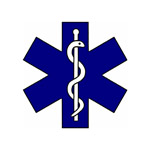Welcome to sprains Guide
Finger Fractures Misdiagnosed As Sprains Article
 To bookmark this article for further reading, click here.
To bookmark this article for further reading, click here.
Finger Sprains: Point In The Right Direction
Finger sprains are like any other sprain really. They are the injury of the ligaments. However, there are so many different ligaments and joints in the hands and fingers, that they can be sprained fairly easily.
The main reason for finger sprains is blows to the finger. This is commonly referred to as finger jams. The most common place for finger sprains to occur is definitely in sports like basketball and volleyball.
This is because these sports involve hands and hard surfaces as well as the necessity of the hand and ball coming into contact with each other. However, sports are definitely not the only way that these injuries can occur. For instance, finger sprains are often common injuries for people who have poor coordination or a heightened clumsiness.
However, finger sprains are most often not too serious and can be treated quite easily. The most common treatment is buddy taping. Buddy taping occurs when the finger beside the injured finger is used as a brace for the injured finger. They are taped together to prevent further injury and increase stability.
Sometimes metal finger braces are used for more serious finger injuries. The only time surgery is needed in a finger injury is when a piece of broken has broken off during the injury or if the ligament has been torn completely.
Typical finger injuries do not cause that much pain over time and therefore medication is typically only needed initially or for a very short period of time after the injury.
There are definitely some ways to prevent finger jamming or finger sprains although it is not quite as easy as other sprains. Especially in volleyball where the hands are used as the primary tool for play, prevention of finger sprains is quite difficult. The most common player to receive finger ligament injuries is the setter.
This person is responsible for setting up the big hit for the power players in the game. However, because they are supposed to almost cradle the ball with their fingers before extending it into the air, their fingers are at greater risk.
Often setters will use sports tape wrapped around the joints of the fingers to give them more strength. However, this type of sprain is almost impossible to prevent. More often than not, a doctor’s visit is not even necessary.
The important thing to mention is that arthritis in the finger joints can develop of the same joint is being injured over and over again. Injuries are a part of athletics and should be somewhat expected, but that does not mean that care of the injury should not have the utmost care.


